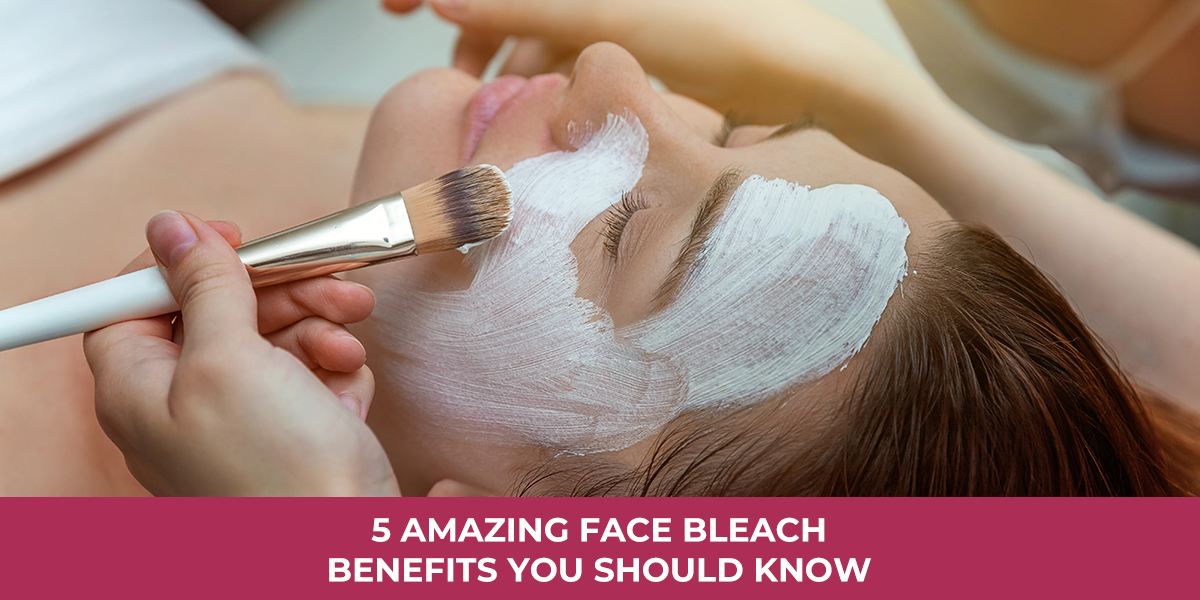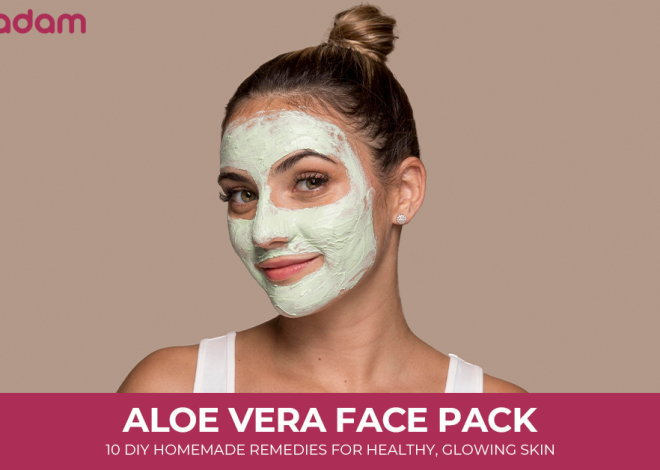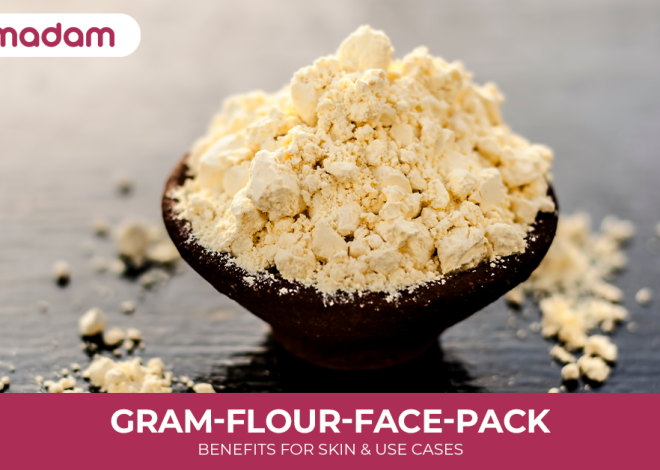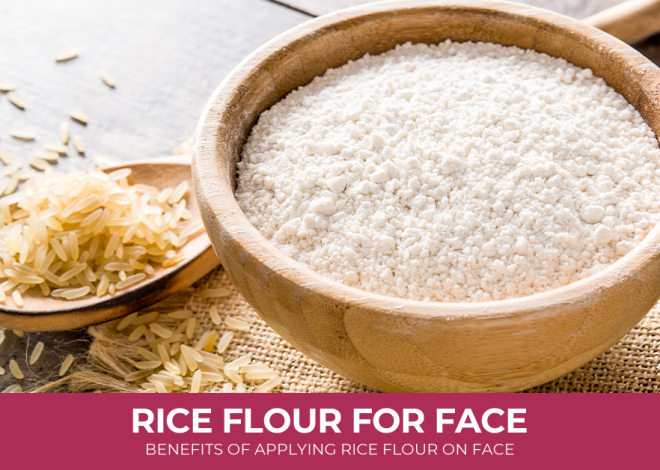
5 Amazing Face Bleach Benefits You Should Know
With growing beauty consciousness, facial bleaching has become a popular method for achieving a brighter complexion or removing dark spots. If you’re unsure whether bleaching is good or bad for your skin, or want to uncover face bleach benefits, this blog will address all your concerns.
Table of Contents
What Is Face Bleaching?
Facial bleach is a skincare product designed to lighten facial hair and improve skin tone. It works by breaking down melanin, the pigment responsible for skin and hair color, using hydrogen peroxide or similar agents. These are some of the most notable benefits of bleach on skin.
This process helps fade dark spots, reduce hyperpigmentation, and create a more radiant, even complexion. Regular use can enhance skin brightness, making it look refreshed and smooth. However, it’s essential to choose a formula suited to your skin type and follow usage instructions to avoid irritation.
How Facial Bleach Works?
Facial bleach not only lightens facial hair but also helps reduce age spots and hyperpigmentation. There are several bleaching benefits for face, but before discussing them, let’s understand how it works and what ingredients it requires.
Key Ingredients
Facial bleach creams contain chemicals that trigger the bleaching effect. One of the main ingredients is Sodium Hypochlorite, responsible for the lightening action. Other common components include:
- Calcium Hypochlorite
- Sodium Percarbonate
- Sodium Dithionate
- Hydrogen Peroxide
How Does It Work?
Hydrogen Peroxide, an oxidizing agent, releases oxygen upon application. This oxygen burst removes dead skin cells, revealing fresher, glowing skin. It is also believed to reduce acne scars, blemishes, and dark spots by breaking down melanin in the skin’s upper layers.
Another bleaching agent, Hydroquinone, decreases melanocyte production, leading to a lighter and more even complexion.
Recommended You: Types of Facials and How to Choose
Is It Good to Bleach Your Face?
Everyone in the world is born with a unique skin tone, and there is no medical need to lighten it. However, there are several benefits of face bleach and we understand that brighter, flawless skin can boost confidence in social and professional settings.
Facial bleaching is one method people use to achieve a lighter, more radiant complexion. It helps reduce dark spots, uneven pigmentation, and blemishes, giving the skin a smoother and more flawless appearance.
Face Bleach Benefits You Need to Know
Here are five face bleach benefits you must know about:
1. Reduces Dark Spots
Dark spots on the skin can be caused by hormonal fluctuations due to puberty or pregnancy, sun damage, and aging. Facial bleach helps minimize melanin concentration, promoting a more even and flawless complexion.
2. Fades Away Sun Tans
Excessive sun exposure can cause tanning on exposed skin. Bleaching helps remove tan marks, giving you a more even-toned complexion.
3. Gives You Glowing Skin Instantly
Bleach lightens facial hair by reducing its natural melanin content. Within 10-15 minutes, darker hair turns into a lighter golden hue, enhancing your skin’s brightness and glow.
4. Helps Reduce Skin Marks
Face bleaching minimizes acne marks, melasma, and freckles. It also helps reduce scars from skin conditions like psoriasis and eczema.
5. Painless and Hassle-Free
Unlike threading or waxing, which can be painful, bleaching only requires applying the cream and leaving it on for a few minutes. You may feel a slight tingling sensation, but after rinsing, your skin will appear smooth and free of dark facial hair.
More Information for You – Bleach vs Facial
Face Bleaching: Safety Tips, Side Effects & Best Practices
Allergic Reactions
Always perform a patch test before using bleach-based products to check for potential allergic reactions. Some ingredients may trigger itching, redness, or swelling.
Skin Sensitivity
Individuals with sensitive skin should be cautious, as bleaching agents contain strong chemicals that may cause irritation, dryness, or burning sensations.
Overuse Risks
Excessive or frequent bleaching can weaken the skin barrier, leading to redness, peeling, or heightened sensitivity over time. It’s essential to follow recommended usage guidelines.
Sun Protection
Bleached skin becomes more vulnerable to UV rays, increasing the risk of sunburn and pigmentation. Always apply sunscreen and limit direct sun exposure after bleaching.
Don’t Miss: Best Natural Bleach for Face at Home
What to Use on Skin After Face Bleach?
After bleaching your face, your skin may feel dry and irritated. To restore balance, apply a gentle, hydrating moisturizer that suits your skin type. Natural remedies like aloe vera gel, cucumber juice, or a yogurt-based mask can further soothe and cool your skin.
Key Tips:
Moisturize: Use a nourishing moisturizer to replenish lost hydration and maintain skin health.
Soothing Agents: Aloe vera gel provides a cooling effect and helps reduce irritation caused by bleaching.
Natural Remedies: Cucumber juice and yogurt-based masks are excellent for soothing and refreshing the skin naturally.
Avoid Harsh Products: Skip scrubs and exfoliants immediately after bleaching to prevent further irritation.
Conclusion
Face bleach does more than enhance your appearance. It helps reduce dark spots, blemishes, and pigmentation by lightening the skin, resulting in a more even and uniform complexion. Its brightening effect revitalizes dull skin, making it look fresh, radiant, and youthful. Regular use can improve skin texture, giving it a smoother and healthier glow. By enhancing your natural beauty, face bleach boosts your confidence effortlessly, helping you feel more comfortable in your skin.
FAQs
What are the prime face bleach benefits?
Prime face bleach benefits include skin brightening, dark spot reduction, tan removal, even skin tone, glow enhancement, fine hair lightening, and deep cleansing, making skin look fresh, youthful, and radiant.
Can bleach remove pigmentation on the face?
Bleaching not only helps lighten your facial hair but it is also effective in getting rid of age spots and skin hyperpigmentation.
Does bleach remove melanin?
Skin bleaching products and procedures reduce the amount of melanin in the skin, which can result in lighter skin.
What’s the difference between whitening and bleaching?
Whitening is a safer and more gradual approach to enhance the skin ‘s appearance naturally. Bleaching, on the other hand, is a stronger, riskier approach to lighten skin tone.
How long does bleaching your face last?
Bleaching is not a permanent solution for your skin problems like pigmentation. If maintained properly, bleaching effects may last nearly 4 weeks.
Can bleach remove tan from the face?
Tan removal is one of the prime benefits of doing bleach on face. It works to eliminate dead skin cells, hydrates the skin, and lightens skin tone.
Is bleach safe for the face?
Frequent bleach application on the face should be avoided because it might harm the skin.
How many minutes do we keep bleach on the face?
Apply a thick bleach layer on the forehead, cheeks, and neck, avoiding eyes and nostrils. Use a thin layer above the lips, leave for 15 minutes, then rinse with cold water.
What not to do after bleaching your face?
Avoid going outside in the sun, right after getting bleached to stop skin irritation and redness.
What is the best age to bleach your face?
The right age to bleach the face is after 20 when the skin matures and stabilizes, making it better able to handle bleach.
Does skin go back to normal after bleaching?
The truth is that skin bleaching does not permanently remove melanin. Since the skin constantly renews, melanocytes continuously produce new melanin.



